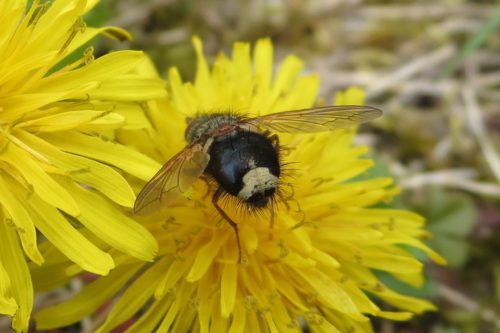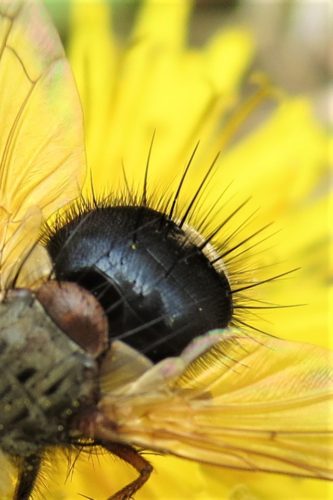Check out this bug that I spotted in my yard today.

After consulting my field guide, I believe that this bug is an early tachinid fly (Epalpus signifer). Tachinid flies are parasitoids that are sometimes used as a form of biological control. Knowing that, I wondered if this was the type of fly that had been introduced to fight winter moths, but it turned out not to be. There are thousands of types of tachinid flies. The one used against the winter moth is Cyzenis albicans.
The early tachinid fly is native to North America and IMHO cuter than its imported cousin. It has a distinctive mark on its posterior and is beautifully bristled.


No amount of mascara could make my lashes look this good. Also note the shiny abdomen and slight iridescence of the wings, both features that count in its favor as far as attractiveness goes.
How the early tachinid fly is born into this world isn’t so cute. The female lays its eggs on the underside of a caterpillar host. After hatching, the larvae dig into the caterpillar and feed on it until fully grown, at which time they drop into the soil to pupate. Other tachinid flies have similar birth stories that differ only in the small details, such as how many eggs, where exactly the eggs are laid, and which creature they parasitize.
But, however horrific their origins, tachinid flies are pollinators, which is a good thing. Plus, among the insects that the tachinid family parasitizes are some of the most notorious plant killers, including not just the winter moth, but gypsy moths, Japanese beetles, and others. I don’t know the tachinid flies very well yet, but I’m starting to like them.
